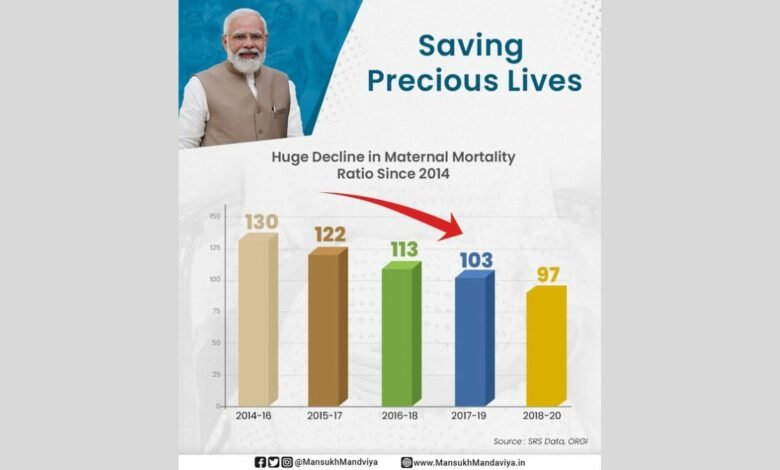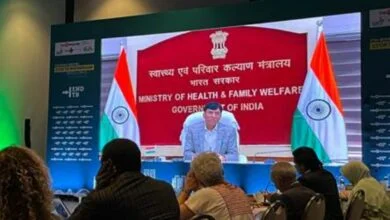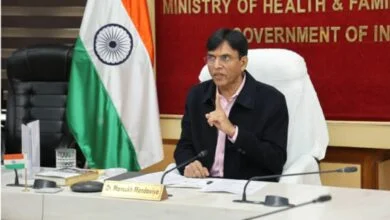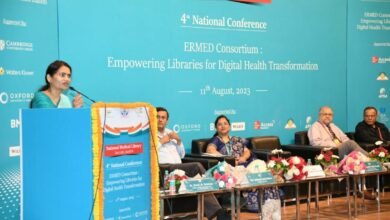Significant Decline in the Maternal Mortality Ratio (MMR) from 130 in 2014-16 to 97 per lakh live births in 2018-20: Dr Mansukh Mandaviya

India achieves National Health Policy (NHP) Target for MMR
In a new milestone, there has been a significant decline in the Maternal Mortality Ratio (MMR) in the country. Congratulating the country on this achievement, Dr Mansukh Mandaviya, Union Minister of Health & Family Welfare praised the remarkable progress in effectively lowering the Maternal Mortality Ratio (MMR) and stated in a tweet:
Significant Decline in the Maternal Mortality Ratio from 130 in 2014-16 to 97 per lakh live births in 2018-20. The various healthcare initiatives of PM @NarendraModi Ji’s Govt to ensure quality maternal and reproductive care helped tremendously in bringing down MMR.
As per the Special Bulletin on MMR released by the Registrar General of India (RGI), the Maternal Mortality Ratio (MMR) of India has improved further by a spectacular 6 points and now stands at 97/ lakh live births. The Maternal Mortality Ratio (MMR) is defined as the number of maternal deaths during a given time period per 100,000 live births.
As per the statistics derived from Sample Registration System (SRS), the country has witnessed a progressive reduction in MMR from 130 in 2014-2016, 122 in 2015-17, 113 in 2016-18, 103 in 2017-19 and to 97 in 2018-20 as depicted below:
Upon achieving this, India has accomplished the National Health Policy (NHP) target for MMR of less than 100/lakh live births and is on the right track to achieve the SDG target of MMR of less than 70/ lakh live births by 2030.
The outstanding progress made in terms of the number of states which have achieved the Sustainable Development Goal (SDG) target, the number has now risen from six to eight leading with Kerala (19), followed by Maharashtra (33), then Telangana (43) and Andhra Pradesh (45), subsequently Tamil Nadu (54), Jharkhand (56), Gujarat (57) and lastly Karnataka (69).
Since 2014, under the National Health Mission (NHM), India has made a concerted effort to provide accessible quality maternal and newborn health services and minimize preventable maternal deaths. The National Health Mission has made significant investments to ensure the provision of healthcare services, particularly for the effective implementation of maternal health programs to accomplish the specified MMR targets.
Government schemes such as “Janani Shishu Suraksha Karyakram” and “Janani Suraksha Yojana” have been modified and upgraded to more assured and respectful service delivery initiatives like Surakshit Matritva Aashwasan’ (SUMAN). Pradhan Mantri Surakshit Matritva Abhiyan (PMSMA) is particularly lauded for its focus on identifying high-risk pregnancies and facilitating their appropriate management. This had a significant impact on mitigating preventable mortality. LaQshya and Midwifery initiatives concentrate on promoting quality care in a respectful and dignified manner ensuring the choice of birthing for all pregnant women.
India’s outstanding efforts in successfully lowering the MMR ratio provide an optimistic outlook on attaining the SDG target of MMR less than 70 much before the stipulated time of 2030 and becoming known as a nation that provides respectful maternal care.
Disclaimer: This is an official press release by PIB.








